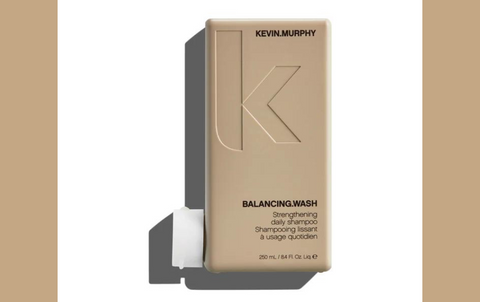If you’re suffering from oily hair, then you’re probably washing it every day to keep it looking fresh and clean. However, trust us on this: side with Team Wash Hair as Little as Possible, because over--washing might end up being harsh on your strands since it strips them of their natural oils and causes your scalp to excessively produce oil. The result of this cyclical problem is combination of greasy roots and dry ends.
Don’t start panicking; as frustrating as this might be, we come bearing good news: you can train your hair to be less greasy. We’ve put together a general guide to learn this technique, which involves spacing out your washes to get your scalp used to not being rinsed that often, thus decreasing oil production in a natural way. These tips will get you on the right track in no time. Sure, it won’t work like a magic spell- especially since the oiliness won’t stop right away- but we promise you that being patient and following through our plan will get you good results.
What is Hair Training?
Basically, hair training is practicing the way to cut down on using shampoo and bringing your scalp back into balance. This includes decreasing the frequency of hair washes step-by-step and not all at once, in order to reduce oil buildup all the while dodging hair damage or depriving your hair of its natural oils. This whole process aims at spacing out your washes correctly so as to not irritate your scalp, so the less often you wash your hair, the less your scalp will feel the need to produce oil.
What causes Oily Hair?
The natural oils in your hair don’t necessarily have to be bad for you. Oil appears because of sebum, an oily and waxy substance which actually serves a purpose: it coats, moisturizes, and protects your skin- including your scalp. Unfortunately, too much of it can cause an oily buildup which leaves your hair looking all limp and greasy – especially if you have fine hair and unlike thick or curly hair that does not need this kind of moisture. There are also other common reasons behind an overproduction of oil in the scalp, and these include: unhealthy eating habits, medications, improper haircare, stress, hormonal fluctuations, and dandruff.
How to Train your Hair to be Less Oily
Get rid of greasy strands for good and learn how to train your hair ahead!
Wash your Hair Less Often
It’s safe to say the first thing that comes into mind when looking into the mirror and seeing the reflection of an oily set of hair is taking a bath. However, how often should you actually wash your hair if it’s oily? It all depends on your hair type and texture really (be it fine, thick, natural, or curly), but you should try to prolong the time in-between shampooing as much as you can (from every other day to once a week, whatever best suits your hair type). As we already highlighted earlier, washing your hair daily can lead to an oily buildup, and if you are used to doing that, it’ll take some time and adjusting to get used to washing it less. Therefore, you need to start by spacing your washes for two or three days. Rinse your hair with water in between shampoos and try to build up to once a week. When your hair adjusts you’ll notice a dramatic difference.
Use Dry Shampoo Between Washes
Dry shampoos are great products to have on standby during this process. When you’re trying to prolong the time between shampooing your hair, a little dry shampoo on your root can have a great effect. On off days, divide your hair in small sections and spray this product directly into the roots. It will start working immediately to combat oil. Try our Goldwell shampoo- Dualsenses Ultra Volume Dry Shampoo 250ml, which will instantly renew volume and provide a freshly cleansed hair feeling. Its instant microfluid technology ensures even distribution and penetration of active ingredients into the hair in order to reduce dirt and oil buildup in-between washes. Hold on, we’re not done: it also adds a healthy shine, and is applicable on natural, color-treated, or highlighted hair Reduces build-up between washes, leaving hair with a natural, cared-for touch and healthy shine.

When you do Wash your Hair, use a Sulfate-free Shampoo
Newsflash: Most shampoos contain sudsy detergents called sulfates that can over-cleanse and dry out your scalp. The first few times you use a shampoo with sulfates, you might feel like you’re overwhelmed with that squeaky-clean feeling, but as time goes on, and with repeated everyday washes, your scalp could go into overdrive by overproducing oil to make up for the dryness. That’s why we advise you to opt for a gentle, sulfate-free shampoo to cleanse your scalp and strands without taking away the necessary oils you need for healthy scalp and hair. Try washing your hair using Kevin Murphy Balancing Wash 250ml; the yin and yang of everyday shampoos that is formulated to gently, yet effectively cleanse the hair and scalp while a nourishing blend of amino acids and antioxidant-rich oils to restore moisture, strengthen the hair and protect it against color-fading.

Brush your Hair Regularly
This helps spreading the hair’s natural oils throughout the whole head and the hair fibers’ length. It could come as a natural and lightweight substitute for a leave conditioner. Use Tangle Angel 2.0 Detangling Brush Soft Touch White, as this ultra-soft detangling brush delivers divine results.





